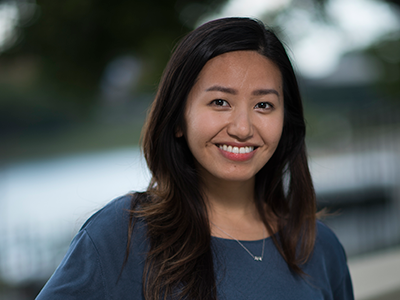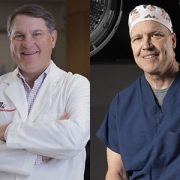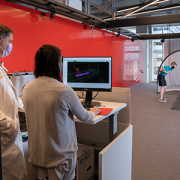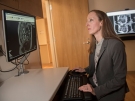Osteochondritis dissecans: Deciding the best candidates for nonoperative treatment

“When patients come to see me with this condition, they’re often at their lowest point. But then I get to watch them go through this transformation as they’re getting better,” says Emily Niu, M.D. “It’s really wonderful to see someone’s personality blossom over the course of treatments.”
The adage of “practice makes perfect” is true for young competitive athletes; however it also puts them at risk for overuse injuries. One of these injuries is a condition called osteochondritis dissecans (OCD), in which repeatedly overloading joints causes increased stress to certain areas of bone. This area of bone can lose its blood supply, become unhealthy and ultimately end up fragmented. In the late stages, this area of bone can break off from the surrounding healthy bone and as a result, the overlying cartilage (which relies on the bone for a foundation) can become prone to damage. This process can be likened to the formation of potholes in a road. Typically, individuals affected can have pain, limited range of motion or even arthritis down the line.
This condition can happen at different locations throughout the body, including the knees, ankles and elbows. Baseball players and gymnasts are particularly prone to getting OCD of the capitellum, or the outside of the elbow, from throwing or tumbling.
If this injury is unstable, with bone and cartilage already fragmenting, it’s typically treated with surgery, explains Emily Niu, M.D., a Children’s National orthopaedic surgeon. Stabilizing the fragment and drilling tunnels in the affected bone surface allows new bone to grow and repair the defect. But for stable OCD, the treatment path is unclear.
Sometimes nonoperative treatments, such as rest, physical therapy or bracing the joint, can allow it to fully heal over time; however, she says, some patients treated nonoperatively may not be able to heal and will still require surgery later.
What distinguishes these two groups has thus far been unclear. Dr. Niu adds that there are few studies that have looked at what characteristics might make patients better candidates for a surgical or nonoperative route. The studies that do exist are limited to very small groups of patients.
To help doctors and their patients make more informed decisions, Dr. Niu and her colleagues performed a retrospective review of 89 patients aged 18 years old and younger treated at Boston Children’s Hospital for stable OCD of the capitellum. The vast majority of these 49 male and 40 female patients were baseball players and gymnasts. Most had just a single elbow affected; four patients (all gymnasts) experienced this problem in both elbows.
Each of these patients was initially treated nonoperatively, with activity restriction, physical therapy and progressive return to activity at the discretion of the treating physician. During this time, all of the athletes had elbow radiographs, elbow MRIs or both to image the injury and follow its healing process.
The researchers report in the November 2018 that just over half of these 93 elbows healed successfully with nonoperative treatments, taking an average of about eight months for symptoms to subside and imaging to show that the bone had healed properly.
When Dr. Niu and her colleagues looked for characteristics that might have influenced whether nonoperative treatments worked or didn’t, they didn’t find any difference in the two groups with age, bone maturity, sex, hand dominance or sport. However, the healing group had symptoms for an average of four months shorter than the non-healing group before they sought treatment. Those patients with bone lesions without clear margins visible on MRI were more likely to heal than those with clear margins, as were those without cyst-like lesions on their bones – both signs of a more advanced process. In addition, those whose bone lesions were relatively small were more likely to heal than those with larger lesions compared to the size of their bones.
Dr. Niu notes that OCD can be a devastating injury for young athletes, interrupting their participation in sports on average for a minimum of six months and significantly longer if nonoperative treatments fail and surgery becomes necessary. Being able to shave some time off that schedule with better knowledge of which type of treatment is most likely to work, she says, can help her patients get back to doing what they love significantly faster.
“When patients come to see me with this condition, they’re often at their lowest point. But then I get to watch them go through this transformation as they’re getting better,” Dr. Niu says. “It’s really wonderful to see someone’s personality blossom over the course of treatments. It’s such a relief for both of us when they’re back where they want to be.”











